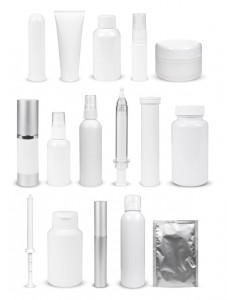 Questions answered by Celeste Hilling
Questions answered by Celeste Hilling
Why does every skin care product contain a list of two-dozen or more ingredients? What are the common ingredients every skin care product contains?
Today, most products are expected to:
- Be multipurpose (i.e. sunscreen moisturizer, shampoo/conditioner in 1, etc);
- Have a long shelf life;
- Be cosmetically pleasing (needs to apply smoothly, not change color, smell nice, etc).
To meet these requirements, most formulations include several key ingredient families: Humectants, Emollients, Occlusives, Protein (Plumping) Agents, Surfactants and Preservatives.
Humectants are used to draw moisture up to the surface layers of the skin. Common humectants ingredients are: AHAs, Glycerin, Glycerol, Elastin, Methyl Gluceth-20, Ceramide, Propylane Glycol, Lecithin, PEG-20, Urea, Sorbitol, Lanolin, Panthenol Vitamin B-5, Ceramide.
Emollients create the feeling of smooth skin by lubricating or filling the cracks in the skin. Common emollients are: Oils from Avocado, Almond, Grapeseed, Sunflower, Jojoba, Sesame, Coconut, Cetyl Alcohol, Isopropyl Isostearate, Isostearyl Alcohol, Propylane Glycol, Squalene.
Occlusives form a moisture barrier or film on the skin to prevent moisture from escaping. Beeswax, Paraffin, Castor Oil, Mineral Oil, Soybean, Lanolin Alcohol, Cetyl Pamitate, Zinc Oxide, Stearyl Alcohol, Dimethicone are common occlusive ingredients.
Protein Agents are used to plump up dead surface skin cells to appear “refreshed.” Collagen, Elastin and Keratin are frequently used for this purpose.
Surfactants allow cleanser to lather or bubble, wash off easily, or allows creams to glide easily on the surface. Common surfactants are: Ammonium Laurel Sulfate, Cocamidopropyl Betaine, PEG-5, 30, 10, 40, 100. Stearic Acid or ingredients ending with the term “Stearates” can be used as surfactants. Lauramide and Ceteareth 20 are common also.
Preservatives are critical elements in products because they kill bacteria, fungus, mold and yeast. Many times multiple preservatives need to be used in a single product to perform all of these functions. Common preservatives are any ingredients ending in the term “paraben” or ending in the term “urea”. Beta Glucan, Methylisothiazolin, and Quarternium-8, 14, etc.
How can you identify the active ingredients? Is there a way to tell how much of these ingredients are actually in the product? And, if not, does the order in which the ingredients are listed provide any clues?
This is tough for consumers because a manufacturer only has to list ingredients in a concentration higher than 1% in order of percentage used in the product. Any ingredient of 1% or less can be listed in any order the manufacturer desires, not in order of percentage used. Therefore if all of the ingredients at 1% or less, they can list the products in the order they desire. Because most consumers are trained to think that ingredients are in order of percentage used, they may think an ingredient is more present in the formula than factually exists. This is why “water” is most often the first ingredient as it is most often the highest percentage ingredient.
These are the most common “active” ingredients which can pharmacologically change skin:
- Vitamins: Vitamin A (retinol), vitamin C (ascorbic acid), vitamin E (tocopherol), vitamin B3 (niacinamide), ubiquinone, lipoic Acid;
- AHA (alpha-hydroxy acids), BHA (betahydroxy acids) and proteolytic enzymes for exfoliating effects; Sodium PCA (pyrrolidone carboxylicacid);
- Glycerols, amino acids, hyaluronic acid, ceramides for moisturizing;
- Triclosan and triclocarban for antimicrobial effects;
- Botanical actives, including aloe vera and other extracts, for anti-aging, exfoliating, moisturizing and antimicrobial
What’s the difference between a serum, lotion, cream, etc.?
While there are no industry standards to define a serum, lotion, or cream, creams are usually made by mixing oils with water. They tend to be moisturizing in action and are best suited for normal and dry skin types.
Lotions or fluids are very similar to creams in containing both water and oil. They tend to be lighter than creams. Lotions can be used by all skin types, though some oily skin types may find them too heavy.
Currently, the most popular type of formulation is a serum. Serums are usually thick liquids and often clear. They are water based and, therefore, lightweight and quickly absorbed into the skin. They are easily used by all skin types. Many companies formulate serums for topical active ingredients such as Vitamin C, peptides, alpha hydroxy acids or retinols. They can usually be formulated at a lower pH and can be layered under other products without interfering with them.
What’s the meaning behind key words like “day” or “night” cream; “long-lasting”; “body” or “face” cream; “nourishing”; “rejuvenating” etc.?
The skin care marketplace is always abuzz with many marketing terms to try and differentiate products (and create new markets for existing products). Usually a Day Cream is lightweight and designed to be layered under makeup. A Night Cream is heavier or more moisture rich meaning it would be harder to layer under make up, so it is preferred to use it at night. Products which have active ingredients targeted for certain conditions such as wrinkles or spots on the face but are too light weight (or expensive) to use on the body so they are designated just for face. Body products are traditionally more moisture rich and creamy for overall hydration. Nourishing, Hydrating, and Rejeuvenating are usually references to adding moisture to the skin.

